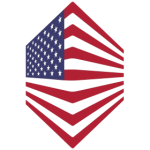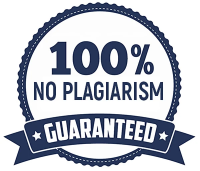Evaluating Returns and Cash Flow Streams- Assessment 4
Evaluating Returns and Cash Flow Streams- Assessment 4. Order 100% plagiarism free essay on Evaluating Returns and Cash Flow Streams- Assessment 4
Assessment instructions
For this assessment, complete Problems 1–9 to apply the necessary knowledge to assess returns and cash flow streams. You may solve the problems algebraically, or you may use a financial calculator or an Excel spreadsheet. In addition to your solution to each computational problem, you must show the supporting work leading to your solution to receive credit for your answer. Note the following:
Evaluating Returns and Cash Flow Streams- Assessment 4. Order 100% plagiarism free essay on Evaluating Returns and Cash Flow Streams- Assessment 4
· You may need an HP 10B II business calculator.
· You may use Word or Excel, but you will find Excel to be most helpful for creating spreadsheets.
· If you choose to solve the problems algebraically, be sure to show your computations.
· If you use a financial calculator, show your input values.
· If you use an Excel spreadsheet, show your input values and formulas.
Problem 1: Portfolio Required Return
You are the money manager of a $10 million investment fund, which consists of four stocks. This fund has the following investments and betas:
Stock Investment Beta
A $3,000,000 1.50
B $1,000,000 (0.50)
C $2,000,000 1.25
D $4,000,000 0.75
Evaluating Returns and Cash Flow Streams- Assessment 4. Order 100% plagiarism free essay on Evaluating Returns and Cash Flow Streams- Assessment 4
If the market’s required rate of return is 12 percent, and the risk-free rate is 4 percent, what is the fund’s required rate of return?
Problem 2: Required Rate of Return
· Stock R’s beta = 1.5
· Stock S’s beta = 0.75
Consider that the required return on an average stock is 14 percent. The risk-free rate of return is 6 percent. If this is so, the required return on the riskier stock exceeds the required return on the less risky stock by how much?
Evaluating Returns and Cash Flow Streams- Assessment 4. Order 100% plagiarism free essay on Evaluating Returns and Cash Flow Streams- Assessment 4
Problem 3: CAPM and Required Return
Calculate the required rate of return for XYZ Inc. using the following information:
· The investors expect a 3.0 percent rate of inflation.
· The real risk-free rate is 2.0 percent.
· The market risk premium is 6.0 percent.
· XYZ Inc. has a beta of 1.7.
· Over the past 5 years, the realized rate of return has averaged 13.0 percent.
Problem 4: Bond Valuation
You have two bonds in your portfolio. Each bond has a face value of $1000 and pays an 8 percent annual coupon. Bond X matures in 1 year, and Bond Y matures in 15 years.
1. If the going interest rate is 4 percent, 9 percent, and 14 percent, what will the value of each bond be? Assume Bond X only has one more interest payment to be made at maturity. Assume there are 15 more payments to be made on Bond Y.
2. The longer-term bond’s price varies more than the shorter-term bond’s price when interest rates change. Explain why.
Evaluating Returns and Cash Flow Streams- Assessment 4. Order 100% plagiarism free essay on Evaluating Returns and Cash Flow Streams- Assessment 4
Problem 5: Yield to Call
Five years ago, XYZ Inc. issued 20-year bonds with a 12 percent annual coupon rate at their $1,000 par value. The bonds had 5 years of call protection and an 8 percent call premium. Yesterday, XYZ Inc. called the bonds.
For this problem, imagine that the investor who purchased the bonds when they were issued held them until they were called. Considering this, compute the realized rate of return. Should the investor be happy with XYZ Inc. calling the bonds? Why or why not?
Problem 6: Yield to Maturity
XYZ Inc. bonds have 5 years left to maturity. Interest is paid annually, and the bonds have a $1,000 par value and a coupon rate of 8 percent.
1. What is the yield to maturity at a current market price of (1) $800 and (2) $1,200?
2. If a “fair” market interest rate for such bonds was 12 percent—that is, is rd=12%—would you pay $800 for each bond? Why or why not?
Problem 7: After-Tax Cost of Debt
The XYZ Inc.’s currently outstanding bonds have a 10 percent yield to maturity and an 8 percent coupon. It can issue new bonds at par that would provide a similar yield to maturity. If its marginal tax rate is 40 percent, what is XYZ’s after-tax cost of debt?
Evaluating Returns and Cash Flow Streams- Assessment 4. Order 100% plagiarism free essay on Evaluating Returns and Cash Flow Streams- Assessment 4
Problem 8: Present Value of an Annuity
Find the present values of the following ordinary annuities if discounting occurs once a year:
1. $300 per year for 10 years at 10 percent.
2. $150 per year for 5 years at 5 percent.
3. $350 per year for 5 years at 0 percent.
Problem 9: Uneven Cash Flow Stream
Use the table below to answer the following:
1. What are the present values of the following cash flow streams if they are compounded at 5 percent annually?
2. What are the PVs of the streams at 0 percent compounded annually?
0 1 2 3 4 5
Stream A $0 $100 $400 $400 $400 $300
Stream B $0 $300 $400 $400 $400 $100






